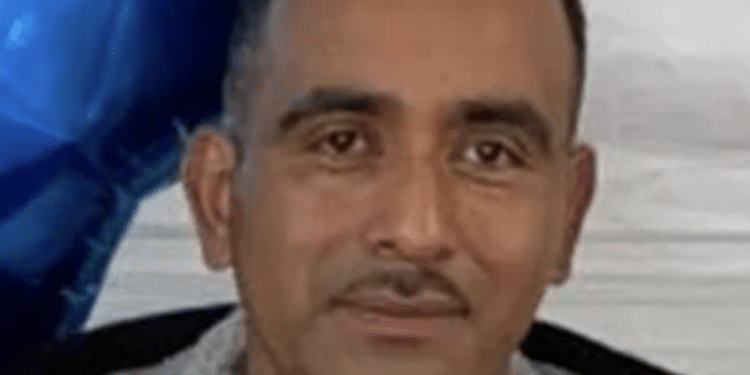The Vanishing Swing: How Media Erased the Weed Whacker from the Barranco Arrest
By Contributor Brian S
On a Saturday morning in Santa Ana, California, 48-year-old landscaper, and proud father of 3 Marines, Narciso Barranco was trimming bushes outside an IHOP when masked federal agents descended. What followed was a chaotic arrest, a viral video, and a national debate. But one detail—perhaps the most pivotal—keeps disappearing from the public record: Barranco allegedly swung a weed whacker at a federal agent’s face. That moment, according to the Department of Homeland Security (DHS), justified the use of force. Yet in most viral clips and media coverage, that swing is nowhere to be seen.
This editorial isn’t about defending ICE tactics or condemning Barranco. It’s about how selective footage and editorial omission can mislead the public, especially when the subject is a father of three U.S. Marines.
The Arrest: What We Know
- Date & Location: June 21, 2025, outside an IHOP in Santa Ana.
- Subject: Narciso Barranco, an undocumented landscaper with no criminal record.
- Family: Three sons in the U.S. Marine Corps—one a veteran of Afghanistan, two currently stationed at Camp Pendleton.
- Incident: Viral videos show Barranco being tackled and punched by masked agents. Public outrage followed, with many calling the arrest excessive and inhumane.
But DHS tells a different story.
“The illegal alien ran, then turned and swung a weed whacker directly at an agent’s face… He then fled through a busy intersection and raised the weed whacker again.” — DHS Assistant Secretary Tricia McLaughlin
The Missing Frames
Despite DHS’s claim, most viral videos begin after the alleged assault. They show Barranco running, being pepper-sprayed, and tackled—but not the moment he supposedly swung the weed whacker. This omission has fueled a narrative of ICE brutality, but it also raises a critical question:
Why is the alleged assault—the very justification for the force used—absent from nearly every news clip?
Some possibilities:
- Footage exists but is edited out to preserve a sympathetic narrative.
- No footage exists of the swing, and DHS is relying on agent testimony.
- Footage exists but is ambiguous, and media outlets chose not to include it due to uncertainty or optics.
Regardless, the result is the same: a public perception shaped by incomplete evidence.
The Psychology of Omission
In media, what’s left out can be more powerful than what’s shown. When viewers see a man being beaten without context, they fill in the blanks—often with outrage. And when that man is a father of Marines, the emotional stakes skyrocket.
But if Barranco did, in fact, swing a weed whacker at agents, that changes the calculus. It doesn’t necessarily justify the level of force used—but it complicates the narrative. And complications don’t go viral.
The Media’s Role in Shaping Sympathy

Coverage from outlets like NBC, KTLA, and Democracy Now! focused heavily on:
- Barranco’s family ties to the military.
- His lack of criminal history.
- The brutality of the arrest.
- The emotional toll on his sons.
What’s often missing? The weed whacker.
Even when DHS’s claim is mentioned, it’s frequently buried beneath paragraphs of emotional appeals and community outrage. Some outlets, like The Santanero, explicitly state that they’ve seen no video evidence of the swing, and DHS has not released it.
But here’s the twist: DHS did release a short clip showing Barranco holding the weed whacker and running. It’s unclear whether he actually swung it at anyone, but the agency insists he did.
The Evidence Gap Let’s break it down:
| Claim | Evidence Available? | Publicly Circulated? |
|---|---|---|
| Barranco swung weed whacker at agent | DHS says yes | No clear footage shown |
| Barranco ran from agents | Yes | Widely shown |
| Barranco was tackled and punched | Yes | Widely shown |
| Barranco refused to identify himself | DHS says yes | Not independently verified |
| Barranco was offered medical care | DHS says yes | Family disputes this |
This gap between what’s claimed and what’s shown is where misleading news thrives.
The Consequences of a Sanitized Narrative
By omitting the alleged aggression, media outlets risk:
- Undermining their credibility when new footage or facts emerge.
- Fueling polarization, as each side accuses the other of bias.
- Dehumanizing law enforcement, portraying them as aggressors without provocation.
- Creating martyrs out of complex figures, which can backfire if the full story surfaces later.
In short, to delete the aggressive nature of Barranco is to mislead the intended audience—not because he deserved what happened, but because the truth deserves to be whole.
What Should Have Happened?
If DHS’s version is accurate, they should have:
- Released full, unedited footage of the incident immediately.
- Provided body cam or surveillance video showing the alleged swing.
- Allowed independent review of the arrest.
If media outlets are omitting key footage, they should:
- Clarify what was edited and why.
- Acknowledge the existence of conflicting claims.
- Avoid framing the story as one-sided, especially when facts are disputed.
Final Thoughts
The story of Narciso Barranco is not just about immigration enforcement. It’s about how narratives are built, edited, and weaponized. It’s about how a father of Marines can be both a sympathetic figure and a man who may have panicked and lashed out. And it’s about how truth gets lost when we only show what supports our side.
If we want to hold institutions accountable, we must also hold ourselves—and our media—to the same standard. That means demanding the full video, not just the viral clip. That means asking hard questions, even when the answers complicate our sympathies.
Because in the end, truth isn’t always tidy—but it’s always worth telling.




